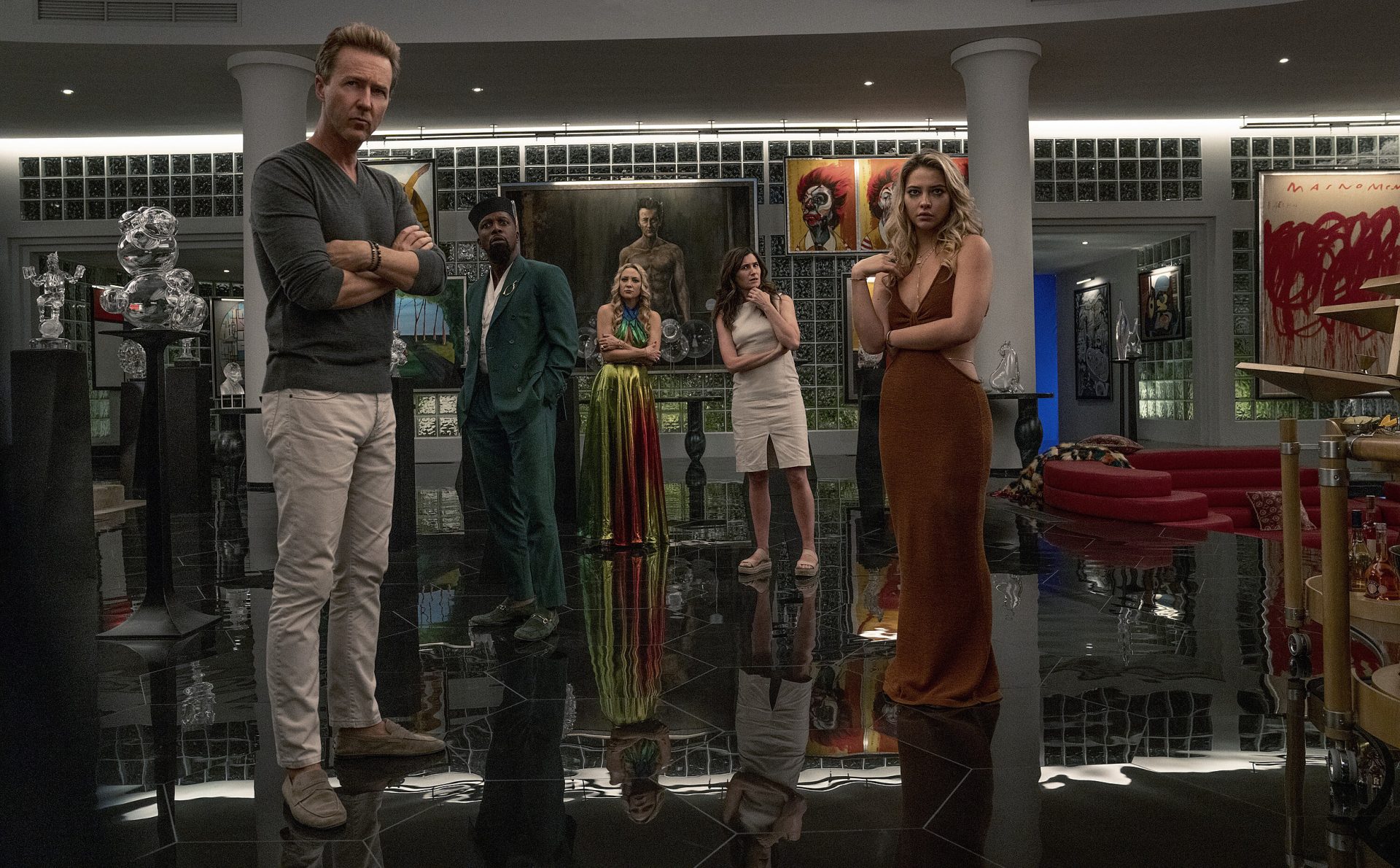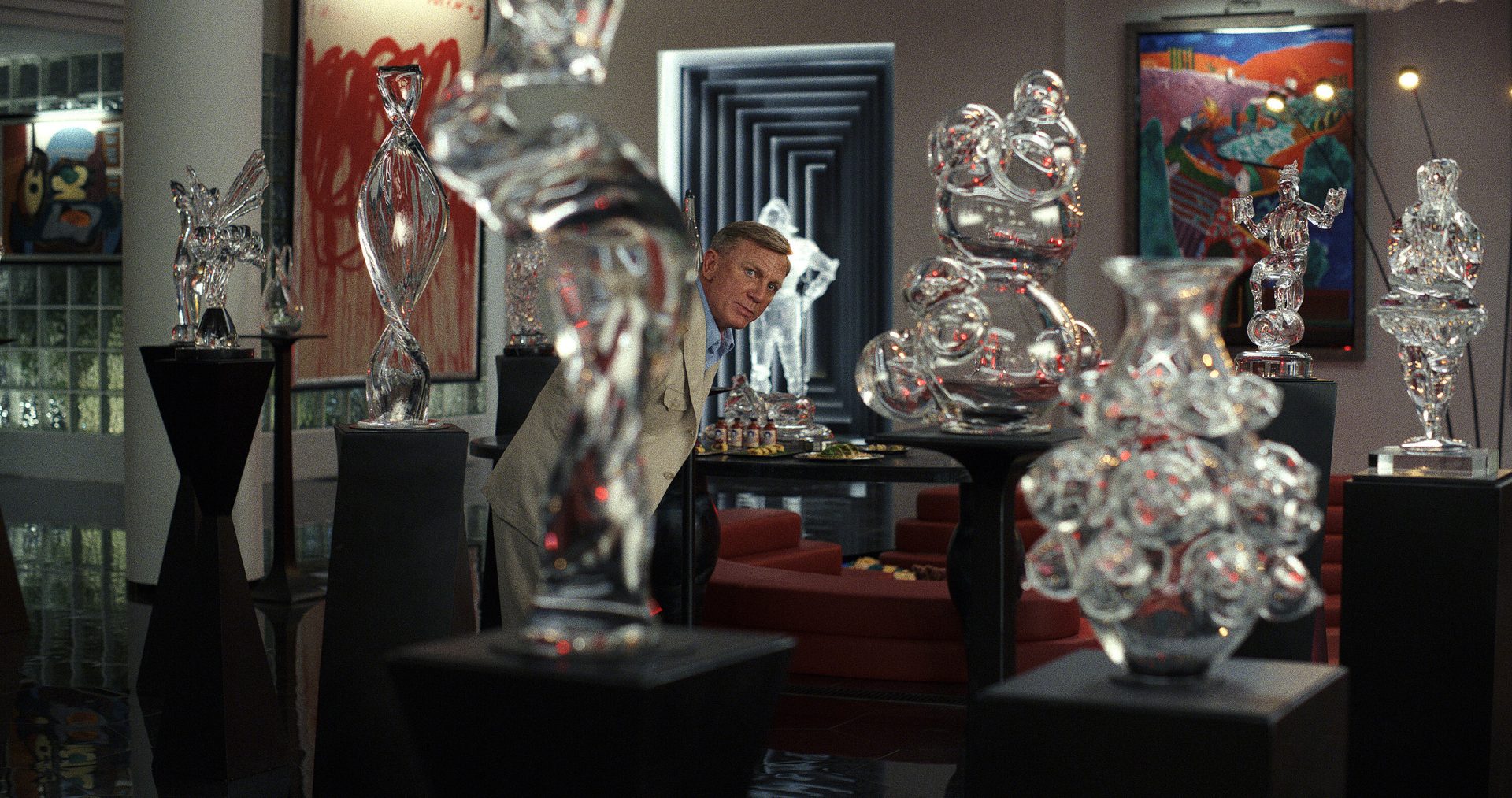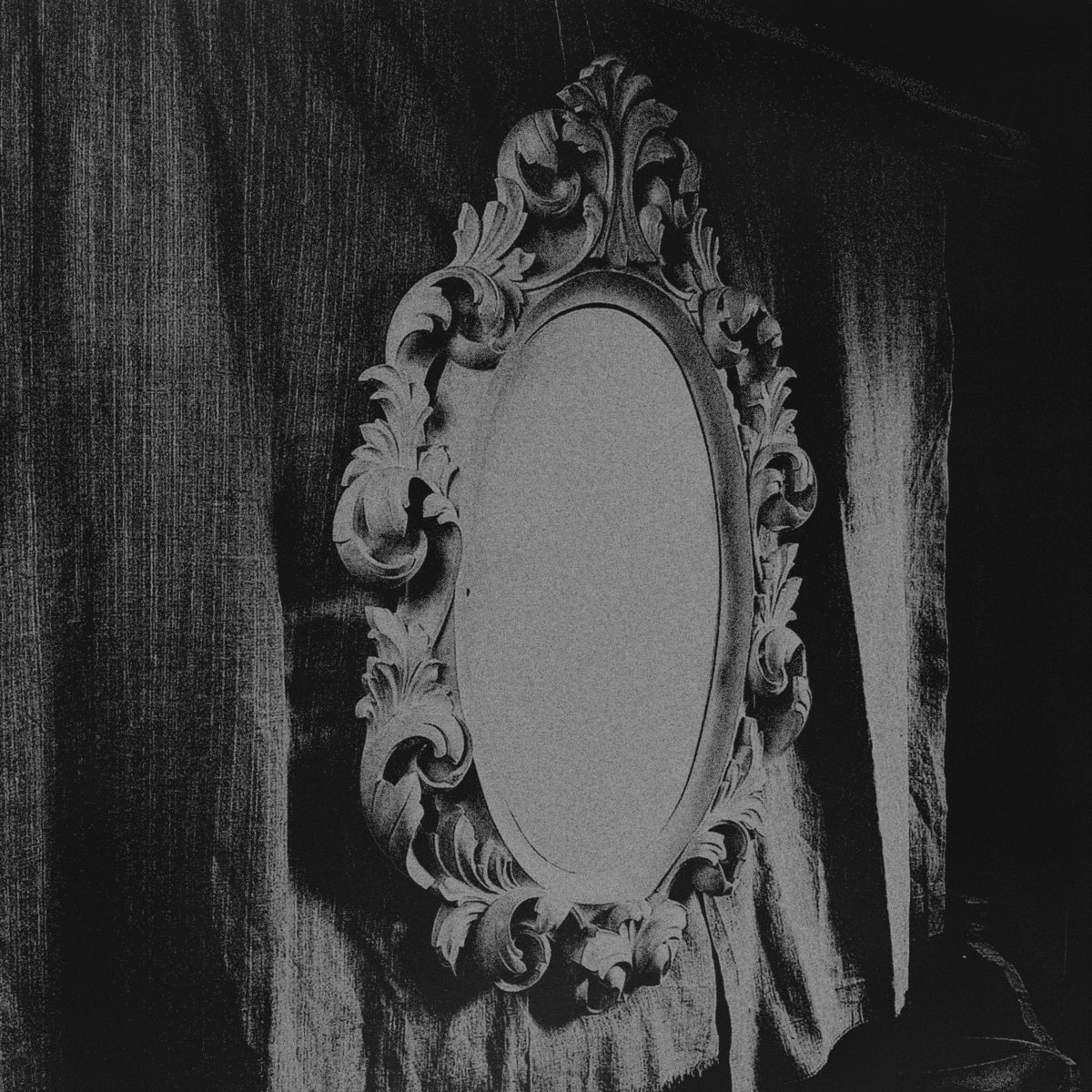
How Glass Onion uses famous art and the art of satire to craft its own disruption
When John Lennon wrote “Glass Onion” for the Beatles’ seminal LP The White Album, it was a response to critics and fans who sought to uncover lyrical meaning in the band’s previous albums where there was none. “The mystery and shit that is built around all forms of art needs smashing anyway,” Lennon wrote in a letter about the song.
This is a theory that director Rian Johnson took and ran with in Glass Onion: A Knives Out Mystery, the follow up to his 2019 murder-mystery blockbuster. A misfit group of “disrupters” — played by the likes of Dave Bautista, Kathryn Hahn, Kate Hudson, Janelle Monáe, and Leslie Odom Jr. — are summoned to the private island of old friend Miles Bron (Edward Norton), now a tech mogul, for a murder mystery weekend to break up the monotony of COVID lockdown.
Read more: Why M3GAN is destined to be a gay icon
Modeled after a literal glass onion, his ostentatious home features an atrium with all forms of art, including “The Mona Lisa,” which Miles borrowed from the Louvre. An actual murder ensues, propelling the elite European visitors into a Da Vinci Code-esque mystery with art at its center. Miles yearns to have his name uttered in the same breath as “The Mona Lisa,” but for his contributions as the inventor of Klear, a solid form of energy that appears as a quartz crystal — or, if you look closer, a glass (minced) onion.

[Courtesy of Netflix]
Miles aims to be a disruptor in his own right, perhaps fancying himself among the likes of activists who deface famous works of art. While activists’ have damaged art by throwing soup at Vincent van Gogh’s “Sunflowers” and “The Sower,” Miles is wrecking art in his own way. Sure, there’s an actual scene in the movie where his guests shatter his assortment of decorative glassware, modeled on some of the lyrics from “Glass Onion,” but Miles’ intentions are more insidious. Art activists don’t exactly want their names associated with their actions — they would rather solely draw attention to the climate crisis and other socio-political issues. The billionaire inventor’s intention, on the other hand, is all rooted in his ego.
“So much of Miles’ artwork is either famous art or expensive art; anything to make him feel powerful,” production designer Rick Heinrichs tells AltPress. “The three tenets of Miles’ art collection are basically power, fame, and his ‘disrupter’ status, and that’s what makes him cool. The ability to have a Banksy or a Basquiat and be considered the bad boy billionaire is the desired effect that he’s trying to have on his friends and the world. He’s trying to blow everybody’s mind with how brilliant he is and, frankly, he doesn’t care if what he’s doing is incredibly dangerous.”
Miles’ desire to be a “disruptor” in the art space — or at least to surround himself with art that agitates — isn’t too foreign to the recent controversy caused by Kim Kardashian’s 2022 Met Gala look in which she wore the exact same Jean-Louis dress Marilyn Monroe wore to sing “Happy Birthday” to President John F. Kennedy in 1962. Many of the conversations surrounding the reality star’s decision included the same, tired perception that the Kardasians are “tacky and classless,” but what people really should have been focused on is the fact that Ripley’s Believe It or Not Museum, where the gown was previously housed, is not an accredited museum. Rather, it is a for-profit private consortium franchise for whom conservation is not its main concern. Or, you know, the starvation diet Kardashian went on to fit into it, the family’s long-held tradition of wearing other women’s features, the fact that we won’t let Monroe rest 60-plus years after her tragic death, or the Met Museum and Gala’s own problems. No wonder institutions like the Louvre have to loan out their artwork.

[Courtesy of Netflix]
Johnson told The Hollywood Reporter that his reasoning for using the Mona Lisa as integral to the mystery of Glass Onion is that “it’s almost more famous for being famous than it is for being a work of art.” Again, paging Kardashian.
Heinrichs agrees, pointing to the inclusion of “Girl with a Pearl Earring” — the viral version featuring the subject taking a selfie, not the original painting by Johannes Vermeer — “as a comment on contemporary society and the way people are so fascinated by their own imagery.”
“The self-referential, self-devoted, and self-loving, and the ability in today’s society to take a selfie and put it on Twitter and broadcast yourself to the world and influencers and all of that, that’s all very integral to a lot of the themes of Glass Onion,” Heinrichs continues.
In the end, it’s Miles’ desperation for notoriety that exposes him as a fraud who hangs his artwork upside down, speaks in malapropisms, and ultimately crashes and burns — just like the Matisse’s dark, falling figure “Icarus,” which he displays in his guest bathroom. Or, maybe I’m just doing what Lennon accused his critics of doing: seeing too much meaning about the sanctity of art in what is supposed to be a rollicking murder mystery blockbuster.








